


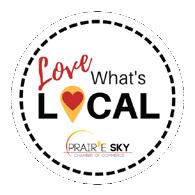
















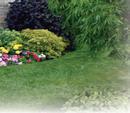






































































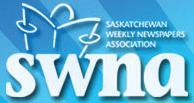
Shanine Sealey, Martensville Messenger
Martensville City Council met for their April Committee of the Whole meeting on Tuesday, April 11th. The meeting began with a public hearing for Bylaw 20-2022, a bylaw to help clarify how to measure property size and property width for multiple unit dwelling projects and additions to the parking in lieu requirements.
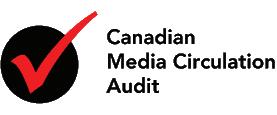
The meeting then continued into a discussion regarding the allocation of the 2023-24 Sask Lotteries Grant Funding. The funding is based on a per capita formula using the population of Martensville and an allocation from the RM of Corman Park, which equals just under $75,000. Numerous funding requests were submitted from various local organizations, sporting groups and schools. “The proposed funding allocation is based on the organization’s project, what benefits it provides to the organization and community, the number of people served and whether it meets the criteria as established by the Sask Lotteries Trust Fund,” Ted Schaeffer, City of Martensville Director of Recreation and Community Services, explained in the report provided to Council.
A list of funding allocations was provided to Council, which includes groups such as New Horizons Centre, Buster Days, Girl Guides, Martensville Youth Connection, Martensville High School, Venture Heights School, Skate Martensville, Martensville Maddogs Football, Martensville Soccer, and more.
Martensville’s Community Economic Development Manager Dillon Shewchuk provided an update to Council, which included information about conversations with various businesses and organizations, as well as continued work regarding health services within the community.
The next Martensville City Council meeting will take place on May 2nd at 5pm in Council Chambers at City Hall. The full agenda for every meeting can be viewed by visiting www.martensville.ca.








 Jocelyn Ottenbreit, Martensville Messenger
Jocelyn Ottenbreit, Martensville Messenger
Mini Soccer/Blastball 2.0 is a great program for kids 3-5 years old that focuses on skill development and fundamentals to help children be confident and motivated moving forward in sport.

This outdoor program includes Soccer and Ball skills with stimulating drills and continuous action.
Parent volunteers act as coaches and assistant coaches and teams are formed from there. An excellent handbook and resources will be provided as well as resources that make it easy to follow and implement.
Kids will be playing soccer for four weeks and then switch to Blastball for the last four weeks.
This is the last week to register your child for this program as the deadline is this Saturday, April 15th.

The City of Martensville will be hosting a Volunteer Appreciation BBQ at the North Ridge Community Centre on April 19th from 4:30pm-6:30pm.

This evening will be an opportunity for the City of Martensville to show their appreciation and support for all of the amazing volunteer coaches, committee/ board members and everyone that has helped out in any way, shape or form within the community.

1. Extend downspouts at least two metres (six feet) from your basement walls. The further the water is from the foundation, the less chance that it will make its way into your basement. Splash pads can help direct the water to a permeable surface, such as a garden or lawn. Clear debris from your eavestroughs (gutters) to prevent them from overflowing. If your eavestroughs or downspouts overflow even when they are clean, install larger ones.
2. Consider moving snow away from the foundation of your home, to prevent a large degree of melting immediately adjacent to your foundation.
3. Ensure proper grading around your home and property or build up the ground slope around your home. Soil should slope down from your foundation and window wells for at least two to three metres (about six to ten feet) at a drop of at least 10-20 centimetres (about four to eight inches). If water soaks into the ground within the backfill zone, it will accumulate next to your basement walls and floor, where it can leak in or damage the foundation. Check your ground slope annually, because soil, sidewalks, patios, decks and driveways can settle over time.
You can find grade elevation information on Martensville.ca
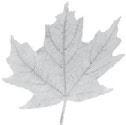

4. Check the drainage paths on your property. Ensure that storm water flows to the lane or street, not towards your home. It also shouldn’t flow into your neighbour’s yard. Property should be graded to keep water flowing in the right direction. If water pools on your property, consider pumping it to the street.
5. Fix leaks in basement walls, floors, windows and doors.
6. If you have protective plumbing, such as backflow valves and sump pumps, make sure they are working properly.
7. If you are away from your property for a period (2-3 days) have someone check the property to ensure water is not coming into the basement.
8. Elevate and/or store important equipment and personal items as to avoid damage in case of water seepage.
City crews will ensure streets, catch basins, and drain ways are clear to ensure the spring melt does not back up on city streets and onto properties so we can all enjoy and have a worry-free spring.
For more information or to report an issue, contact Martensville City Hall or visit Martensville.ca.
The City of Martensville encourages residents, for which their lane is a secondary means of access to their property, to limit their usage during the spring thaw period. Heavy or repetitive vehicle usage during spring thaw and wet conditions can cause further rutting and reduce drainage. This limits the ability of crews to conduct maintenance on the lanes in a timely manner and increases the amount of materials and time required to reshape lanes.
For questions or further information please contact Pubic Works at 931-2166.

On April 1, 2023 at approximately 6:30 p.m., Warman RCMP received a report of a vulnerable person possibly needing assistance.

Investigation determined an 86-year-old male got his vehicle stuck in the snow in Borden, SK. A witness saw him walk away from the vehicle without wearing proper winter clothing or boots. When he did not immediately return to it, the witness became concerned for his safety and called police.
Warman RCMP immediately began searching for the male and recognizing that it would soon get dark and colder, requested the assistance of Saskatoon Police Service Air Support Unit.
Saskatoon Police Service’s plane spotted the male two hours after he was first reported missing, approximately 2.5 kilometres from his vehicle. He had walked through snowy terrain, including fields.

Officers located the male, who was cold but not injured, and reunited him with his family.
“We’re thankful our partners at Saskatoon Police Service were able to join our search for this male. We knew time was of the essence and aerial searches are an invaluable tool that allow us to search a large area in a short amount of time. We were able to locate this male and return him to warmth and safety quite quickly,” says S/ Sgt. Jason Teniuk from the Warman RCMP. “When Saskatchewan’s police services work together to share resources and knowledge during investigations, public safety is enhanced.”
The City of Martensville offers a Green Bin program through Loraas Organics. This service is by subscription.

Pick up of the Green Bins has commenced with regular scheduled bi-weekly collection alternating between North/South Martensville and running from May until the end of October Pick-up take place on Tuesdays. The pick-up schedule can be viewed at Martensville.ca
For information or to sign up for this program contact the Utility Clerk at City Hall.
Please be reminded to clean-up after our pets on the pathways and the off-leash dog park. The mess can be potentially harmful to other pets, exposing them to parvovirus and these public spaces are for everyone to enjoy. Remember to bring along a baggy or use one of the baggy stations located along the pathways and dispose of the mess properly.
Please Note: Council Meetings may be attended in-person, guests may wear a mask if desired within Council Chambers. Those still wishing to attend but would wish to do so virtually should contact the City Clerk or visit the online agenda for the link to attend.
Regular Council Meeting- May 2nd
Committee of the Whole Meeting- May 9th
Regular Council Meeting- May 16th
The Regular Council Meetings are located at Martensville City Hall Council Chambers in Martensville City Hall at 37 Centennial Dr. S All meetings commence at 5 PM.
Those wishing to address or do a presentation to Council must be placed on the agenda. To be placed on the agenda please contact the City Clerk’s office at City Hall or visit the website for details. The full Council and Committee of the Whole Schedule can be obtained at martensville.ca.
May 4th , 2023, City Hall Lobby 6PM-8PM
Stop by for coffee and refreshments and meet with Council, administration and members of the RCMP to ask questions, and discuss civic matters that are important to you. Learn about what is planned for 2023, including the Martensville Community Recreation Centre, upcoming road and rehabilitation projects and more.
We look forward to seeing you!
23043CC1
23043CC2
Since 2007, the University of Saskatchewan, College of Education has recognized and acknowledged significant successes and outstanding accomplishments of their alumni attesting to the excellence of the University of Saskatchewan educational experience by creating a Wall of Honour Award. The College has honoured over 70 alumni that graduated from the University of Saskatchewan, College of Education who showed leadership, excellence, and innovation in their contributions and achievements to the cultural, social, and economic well-being of society which reflects positively on the College of Education.
lastly Walter Murray Collegiate in Saskatoon.
For eight years Rowley taught Physical Education, coached basketball, volleyball and track and field at Bedford Road Collegiate.
At Mount Royal Collegiate she taught Life Transitions, Ethical Living, and Physical Education. In 2001, she started Saskatchewan’s first GSA (Gay-Straight Alliance, now Gender and Sexuality Alliance to be more inclusive). Patti’s constant pressure and determination made it a reality when it was first met with resistance.
Rowley continued to host student-run weekly GSA meetings with some special events at Walter Murray and it was the first collegiate to have gender-neutral bathrooms.


In her Life Transitions, Psychology and Sex Education curricula, Patti included queer education and had community members as guest presenters from OUTSaskatoon, which is Saskatoon and area’s 2SLGBTQ community support centre.
“I attended a breakout session at our division’s institute and convention on homophobia. I thought, ‘I can do this, start a GSA.’ I guess I was kind of a bulldog, relentless, but this was uncharted territory and students needed it. After the initial hesitation, administrators and staff were so supportive. At the open house in February, we had a booth set up, and every teacher was wearing a rainbow ribbon.”
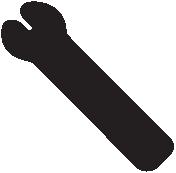

This feature wall is situated on the main floor of the Education Building where names and photographs of all recipients, past and current, that have received The Wall of Honour Award, are displayed.
- Patti Rowley
Patti Rowley from Martensville was a recent recipient of this award. She attended the University of Saskatchewan completing her education with a Bachelor of Science in Physical Education (B.S.P.E. ’83) and a B.Ed (’84). Being an educator for thirty-three years, Patti’s impact with diverse students, gang members, as well as MIT and Harvard grads has made a difference in their lives by teaching with humour and compassion.
Focusing on being an ally and advocate for gender and sexually diverse students, Rowley provided a voice to the voiceless, and made students feel safe and confident.
She has taught over 6600 students starting with the Comprehensive High School in Swift Current, then with the Saskatoon Public School Division (SPSD) at Bedford Road Collegiate, Mount Royal Collegiate, and











Rowley received the Peter Corren Award in 2013 for her work with queer youth at the Breaking the Silence Conference at the University of Saskatchewan. This award is given to a person, persons, or organization whose efforts have had a long-term impact on social justice for sexual minorities.


In 2017 Rowley received the OUTSaskatoon OUTshine KNOCKOUT award and was nominated for the YWCA Woman of Distinction award in education.
Rowley was recognized by MP Sherri Benson for her community service in Saskatoon West in 2019, and has also done presentations at staff openings, and the Breaking the Silence conference. She was the Keynote Speaker at the Prairie Pride Conference for


students with Prairie Spirit School Division (PSSD). Since retiring in 2018, Patti has decided to substitute teach in the Prairie Spirit School Division. Patti stated, “I’ve had such a blast subbing. Students are so much fun! It’s been amazing to see GSA’s up and running in the schools I’ve been at, and now they’re in many more schools. Things have improved since 2001, and although there’s still work to do, I know our youth are in good hands!”
Jocelyn Ottenbreit, Martensville Messenger


The Martensville Voyage Club departed for a two week adventure throughout Europe on April 6th. Their first stop was to Germany where they visited Berlin and Dresdan, with their next destination taking them to the Czech Republic where they had an opportunity to see Prague, Kutna and Hora.
From there the group will be travelling to Krakow, Poland, then through Slovakia to Budapest, Hungary, and Austria to see Vienna before returning home on April 19th.
Safe travels on this once in a lifetime oportunity Martensville Voyage Club.


BELOW: The group before leaving on their two-week long journey throughout Europe. (Submitted)

 Shanine Sealey, Martensville Messenger
Shanine Sealey, Martensville Messenger

With warmer weather on the horizon, the Saskatoon Fire Department (SFD) released a statement reminding the public to be mindful of ice conditions during the freeze-thaw cycle.
Testing has recently been done by the SFD which have determined ice thickness is not suitable for winter recreational use, as ice must be a minimum thickness of at least eight inches to be considered safe. Due to ice surfaces around Saskatoon being below this number, fire crews will be posting signage at each recreational storm pond that read “No Skating”.


“Community members who use the ponds for recreational purposes assume all risk and maintenance responsibilities for the ice including removing personal belongings, as well as user safety,” the news release from the City of Saskatoon stated.
In addition, ice on the South Saskatchewan River has also begun melting, and the public is reminded that the ice on this body of water is unpredictable and is never safe for recreational use, so residents are asked to never venture out onto ice surfaces along the river.
On Friday, April 7th, at approximately 10:30pm, Warman Fire Rescue received a call regarding a vehicle that had gone through the ice at the Clarkboro Ferry crossing on the South Saskatchewan River. Corman Park Police, as well as Saskatoon RCMP were also on scene.
Upon arriving, WFR was notified by a witness that the two occupants were able to escape the vehicle and were safe on the Aberdeen side of the river, with no other occupants left in the vehicle.
Warman Fire Chief Russ Austin stated that the vehicle was completely submerged and no rescue efforts were required.
“As always, we remind people that ice crossings on moving water are never safe at any time of year as ice thickness is affected by shifting currents and changes in water flow,” Austin stated.

Community members are advised to always exercise an elevated level of caution when around any large body of water. Keep a close watch on children and pets when visiting trails, parks, or off-leash areas that may run adjacent to the South Saskatchewan River or a storm water retention pond.
Newly released labour force figures from Statistics Canada for March reveal more job growth in Saskatchewan, with 9,500 new jobs when compared to March 2022, an increase of 1.7 per cent.
“With 24 months of consecutive year-over-year job growth, Saskatchewan remains the national leader in consistent job and economic growth,” Immigration and Career Training Minister Jeremy Harrison said. “Our government wants to acknowledge and thank the hard working business owners and job creators for their efforts in growing and expanding our provincial economy.”


Saskatchewan’s seasonally adjusted unemployment rate reached 4.7 per cent, down from 5.0 per cent one year ago and is below the national average of 5.0 per cent. The province saw record highs for the month of March, including:
• Saskatchewan employment: 578,500
• Saskatchewan full-time employment: 469,600

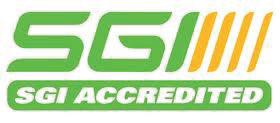
• Off-reserve Indigenous employment: 62,000

Saskatchewan’s youth population increased by 3,800 (+2.8 per cent), and the labour force up by 1,100 (+1.3 per cent), with employment up by 600 (+0.8 per cent) compared to March 2022.

Off-reserve Indigenous employment increased by 1,600 (+2.6 per cent), marking 28 consecutive months of year-over-year increases. Indigenous youth employment was also up by 1,100 (+11.3 per cent), marking four consecutive months of year-over-year increases.
Major year-over-year gains were reported for professional, scientific, and technical services, up 6,200 (+24.9 per cent); transportation and warehousing, up 2,300 (+9.7 per cent); and trade, up 2,300 (+2.4 per cent).





Recently, Saskatchewan’s merchandise exports for February saw an increase of 31.9 per cent, valued at $4.2 billion. Additionally, Saskatchewan led the provinces in growth of investment in building construction, with a 21.5 per cent increase in January 2023 compared to January 2022.




The number of unanswered calls for an ambulance in Saskatchewan is startling. In the first six weeks of 2023, there were 226 times when someone in this province dialed for an ambulance and then was told “no ambulance is available.”
This isn’t just a big city problem. Saskatoon’s numbers weren’t even included in the NDP’s FOI.
Consider where else those calls went unanswered: 24 in Buffalo Narrows; 17 in Meadow Lake; Seven each in Shaunavon and Esterhazy; six in each La Loche, Melville and Langenburg; five in Whitewood, four in each Ile-a-laCrosse, Black Lake and Lampman; three in each Oxbow and Carnduff, and; two in each Redvers, Kipling, Ituna and Estevan.
There is a story accompanying each and every one of these missed calls -whether it’s a story like the one of the young mother in Meadow Lake who had to have her baby delivered on the side of highway because her ambulance call went unanswered or someone with chest pains or seizures.
"How did things get so bad with our ambulance system?" NDP leader Carla Beck asked in question period last week.
It’s a pretty good question where the real answer is significantly more complicated than the ones we got from Saskatchewan Party Minister in the assembly. In fact, the assembly was largely a recitation of what has already been done to date that hasn’t exactly addressed the problem.
The 2023-24 budget added about $9 million that will enhance 95 positions for ground ambulance service full time equivalent positions in the 2022-23 budget of last year, Premier Scott Moe responded in the assembly. This is all an additional complement to the long-existing fixed-wing ambulance service that has served the rural and the north for decades and the Shock Trauma Air Rescue Service (STARS) helicopter ambulance service that the Saskatchewan Party government implemented a decade ago.
The financial commitment - both long and short term - demonstrates the Sask. Party governing is trying to address the problem in a serious way. So why can’t government seem to get a handle on this problem?
Well, it’s one of those Saskatchewan long in the making and running headlong into some of the most difficult social and economic realities.
The economic reality is the social-economic reality of maintaining people’s critical roles in this province - many, in health care - where the work is hard and the skills are in demand everywhere including other places where people might prefer to live.
“We’ve definitely seen a shortage,” Steve Skoworodko, president of the Paramedic Services Chiefs of Saskatchewan (PSCS) told the Regina Leader-Post’s Alec Salloum of the 102 paramedic vacancies in the province for paramedics. “Some of those positions had been up to a year where they had been vacant.”
But it’s a problem of paramedics and ambulances having to drive greater distances because hospitals are either temporarily closed due to doctor/nursing shortages or permanently closed because that’s what has been happening in rural Saskatchewan for 30 years.
It's a social problem of domestic and other violence and alcohol and drug addiction (especially fentanyl) everywhere. Often, those who suffer the most don’t have cars. It’s a problem with aging population, and, yes, some of it has to do with COVID-19.
It’s a problem of paramedics having to stay with patients because emergency rooms are so overcrowded and while STARS is a solution, it’s more of solution for trauma like what happened at James Smith Cree Nation or the Humboldt bus crash.
This is what STARS was designed for - those rare dramatic traumas or accidents. There is only one helicopter available in each city. There are days and places when they cannot fly nor would it make any sense to have them respond to every heart attack or overdose.
There are issues when a lot of problems come home to roost. The ambulance crisis appears to be one of them.


Saskatchewan is growing at a pace not seen in more than 100 years, recently reaching an all-time population record of 1.21 million. With this rapid growth, we now have over 189,000 students in Kindergarten through Grade 12 schools in the province, the most we have seen in over 20 years.
Growth that works for everyone means every student receives the best possible education. That’s why our government made significant investments in education in the provincial 2023-24 Budget, totaling a record $4 billion.
This year’s budget includes a record $3.1 billion for the Ministry of Education to fund schools, early learning and child care, and libraries. Saskatchewan’s school divisions will get a record $2 billion in operation funding. Funding will maintain the over 200 Educational Assistants hired since September 2021 and allow them to continue providing student support in our classrooms.
The Saskatchewan Distance Learning Corporation (Sask DLC) will receive $23 million for startup and operational costs. Sask DLC will offer unique learning opportunities for students by offering over 180 courses for Kindergarten to Grade 12 students, including several unique high school electives. Grade 12 completion and electives are available to adult learners as well. Registration is now open for the 2023-24 school year at SaskDLC.ca.
Several capital projects are being funded this year, including a new school to replace and consolidate the elementary and high school in Carlyle. A new K-12 Francophone school will replace École Valois in Prince Albert, and a new Francophone elementary school will be built in Saskatoon. Several schools across the province will also be renovated and a site has been chosen for the new Harbour Landing school.
These new capital education projects are in addition to 15 new school builds and seven renovations already underway across the province. Investments in schools ensure our facilities are prepared for continued growth and can provide quality learning opportunities for students into the future.
Our government will invest $382.4 million in early learning and child care this year to support young families. This funding, through a partnership with the federal government, reduces parent fees for regulated child care to $10 per day as of April 1, three years ahead of schedule. Funding will also support continued efforts to add more child care spaces and programs for early childhood educators.
Public libraries will receive $11.6 million to support the services they provide to communities across the province. This includes an increase in grants to public libraries for resource-sharing services. A new investment of $200,000 will refresh the province’s collection of multi-lingual materials and add more materials in Indigenous languages. These investments in public libraries continue to support learning opportunities in our growing and diverse province.
Post-secondary education funding has increased by 3.3 per cent in this year’s budget for a total of $764.8 million. This includes a 90 per cent increase for infrastructure projects. Funding will go towards planning and design for Saskatchewan Polytechnic’s campus renewal project in Saskatoon. Investments will also allow for renovations to the University of Saskatchewan’s dental clinic, as well as equipment and renovations for expanded health programs across the province.
Our government will expand training programs for key health professionals with a $25.2 million investment. Beginning this fall, 550 new seats will be added to 18 high-priority health training programs. Funding will also support the continuation of a 150-seat expansion in nursing programs to further address needs in the health sector. These expansions will increase educational opportunities for Saskatchewan students while generating interest in the health sector in our province.
Post-secondary students will benefit from $47 million in student supports. This year, the Student Aid Fund and Saskatchewan Advantage Scholarship will increase, and an investment of $50,000 will provide new Indigenous Language Scholarships. The Graduate Retention Program will continue to support students who remain in the province to work with up to $20,000 in tax credits. Our government’s postsecondary investments contribute to further growth by supporting students as they put down roots in Saskatchewan communities.
Investments in education are investments in our province’s continued growth. Ensuring students at all levels have access to learning opportunities is growth that works for everyone. To learn more about the 2023/24 Provincial Budget visit Saskatchewan.ca.
The Martensville Messenger welcomes letters to the editor for publication. Letters must be signed and a phone number and/or email address included so the writer’s identity can be verified. ALL letters are the opinion of the writer and NOT the Martensville Messenger. We reserve the right to edit letters for length, clarity or compliance with the current standards of public taste. Submit your letter to news@ martensvillemessenger.ca or mail to Box 333 - Martensville, SK S0K 2T0.









On April 6th, government passed The Saskatchewan Firearms Act to enhance public safety across Saskatchewan and protect the rights of lawful firearms owners.
"It is important for Saskatchewan to have its own provincial firearms legislation to ensure the concerns of responsible firearms owners are taken into account," Corrections, Policing and Public Safety Minister Christine Tell said. "This legislation will create a strong, consistent framework to enhance public safety and support the proud tradition of responsible firearms use and ownership in this province." The Act will:
• With respect to recent changes by the federal government that impact lawful firearms owners:
- establish licensing requirements for seizure agents involved in firearms expropriation;
- require and oversee fair compensation for any firearms being seized; and
- require forensic and ballistic testing of seized firearms.
• Establish a provincial firearms regulatory system that will promote the safe and responsible use of firearms.
This legislation will be primarily administered by the Saskatchewan Firearms Office. The Office will also take on an expanded role in prosecuting non-violent provincial firearms offenses.
"The Saskatchewan Firearms Act is critical to our work to improve public safety, promote responsible firearms ownership and assist the police in addressing crimes committed with illegal firearms," Chief Firearms Officer Robert Freberg said. "This legislation, and the significant funding we have received in this year's provincial budget, will be put to good use as we continue to develop the Saskatchewan Firearms Office." Government has dedicated approximately $8.9 million to the Saskatchewan Firearms Office in the 2023-24 budget, which will include funding for initiatives such as:
• Creating a Central Management and Services (CMS) unit to administer the Firearms Act in Saskatchewan, which includes jurisdiction over the licensing, storage, transportation and carrying of firearms ($2.2 million);
• Establishing a Firearms Compensation Committee to determine the fair market value of any firearms, ammunition and related accessories being expropriated by the federal government ($1.3 million);
• Constructing a Saskatchewan Firearms Ballistics Lab to support police services and provide timely access to Saskatchewanbased ballistics and firearms expertise ($927,000); and, • Enhancing training and education regarding safe storage and firearms licensing.

“Between stimulus and response there is a space. In that space is our power to choose our response. In our response lies our growth and our freedom.”
~ Viktor Frankl ~ The Will to Meaning &Yes to Life
Did you know that we think, feel, and act, based on an order of operations? If you’ve ever learned anything about Cognitive Behavioural Therapy (CBT), then this will sound familiar. CBT and other therapies can offer strategies that help us to realize our power, and understand how the brain, mind, and body work to protect us and connect us, as a means of survival. We can harness the power of these therapies when navigating the ups and downs of life, i.e., experiences, feelings, emotions, and moods; and we can learn to slow down and observe these things, versus immediately reacting to them. As an aside, if you are experiencing overwhelming grief, anxiety, depression, suicidal thoughts, or other powerful emotions, these strategies can still be helpful, however, seeking professional help may be an essential aspect of your healing. It is not always easy to do these things on our own. Knowing where our power lies, and that we do have some choice in regards to our well-being and states of health, may only be the beginning of a longer healing journey for some.
My Mood, My Choice . . . Really? - It's hard to imagine, but at any given time, you and I are only one thought away from a good mood. Yet, we can all too often find ourselves locked in debilitating battles with our emotions. How can this contradiction be? Well, it is because we can hang on to negative emotions giving them increased power; and though not always purposefully, we can embody our emotions without even thinking. Our emotions have a fast and furious job, they mean to protect us from harm or connect us to help, and we are meant to grow forward. Emotions are information, and they usually only last a few moments, moving us to act. Sometimes what happens, however, is our thoughts trap emotions, and instead of moving on (like clouds in the sky), they stay and become a fog of a bad mood – or worse, an illness or disorder. However, moods, rooted in lingering emotions, can be mitigated with reflection, help, and time to think about how we feel. Thinking is where we can harness our power and our ability to choose how we respond to big emotions. Calming the brain, mind, and body in this manner can impact our lives drastically.
Responding to emotions without embodying them requires the use of some tools. These tools can help us to rationalize emotions and think through our actions. The process of figuring out how to slow things down, and to cope with and manage emotions, can be hard, but it’s not impossible. In my own experience, this work is completely worth it, as we can save ourselves a great deal of pain – when we put our minds to it!
Here’s how it works: usually we are going about our day, when an event happens. If the event is not obviously safe, expected, or joyful, we can respond with a powerful protective emotional trigger: fight-flightfreeze is typical. I always tell people, these automatic neuro-chemical responses translate into the emotions of mad-sad-scared, and if they stick around, they can become anger, anxiety, or depression. I suffer from anxiety, so, from time to time, I am forced to use CBT type tools to access my critical thinking and decision-making skills and change my thoughts to change my life, literally! Once an emotion (for me a fear) passes, and I am back on-line, aka out of the emotion, I reach for different more tender emotions to help me connect, ground myself, and be well. Knowing about and accessing the inner resources of my own mind helps me to gain my power back. These tools have been an essential aspect of my own well-being and healing.
CBT tools remind me: I am experiencing an emotion; I am not the emotion itself.- Some of the tools that have worked for me are as follows: 1) being mindful and present when in an emotion; 2) observing the emotion versus embodying it; 3) allowing myself to experience the emotion as a wave or a cloud (it comes and goes); 4) paying attention to the physical elements of the emotion, and noticing how these elements (a racing heart, sweating, nervousness, heaviness, pain in my gut, etc.) come and go; and 5) reminding myself, I am not my emotions – I am so much more.
One of the most common misconceptions about emotions and moods, is that we have little or no power over how we feel, and thus no choice in the matter either. For the most part, this simply isn’t true. Knowledge helps, and that’s why CBT type tools are full of psycho-educational components that help to teach us that we do not have to be a victim to our emotions. I wasn’t always good at this; however, therapy, proper sleep, healthy nutritious foods, movement, time in the sun, downtime, and quality time with pets or people all help to pull me out of the depths of despair. For some, medications, and other on-going therapeutic interventions and groups, can help as well.
The bottom-line, with any healing or health related strategy, is to understand emotions and experience them as they occur, but avoid acting on them, or judging them in a particular moment. Observing emotions allows for the much-needed space to think, and thinking makes choosing our response to emotions a heck of a lot easier. When we slow things down, we reduce an emotions intensity and power, and they do not have to settle in and become a mood or a state of continually being.
Reminders:
• Emotions are floods of sensation aimed to protect us from harm and connect us to safety. Emotions play a very important role in our lives - they are key to our survival.
• Emotions don’t have to have all the power – we are not our emotions and when calm we can make decisions to cope with and manage life.
• We don’t want to push our emotions away, or hold them too close; it’s kind of like a goldilocks principle - that which we resist, persists - and yet, if we get too close to the fire, we can burn.

• Think of emotions as information: they give us knowledge about our experiences of an event – but that’s it – we don’t have to become our emotions: welcome emotions, allow and honour the experience of them, and then, be ok letting them go.
• If we don’t want to let go of an emotion - that’s ok too. The important thing is recognizing we have this choice. The emotion might be sticking around to communicate something important, either to us or others - we can choose to honour emotions and choose to let them go when ready.
• We can also focus on the positives: what did we learn from the emotion, the experience, or our reaction? How did we grow from this? What did it teach us? Etc. Each adverse situation we face and overcome builds strength and resilience. If you are struggling with your mental health alone, The Canadian Mental Health Association offers free online and local support groups for a variety of needs; these groups can be found here: https://cmhasaskatoon.ca/programs/support-groups/ You may also contact judy@prairieskyeducation.ca for direction to supports, resources, a consultation, or a referral.